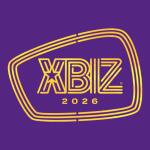In this installment of our ongoing series on understanding Google's complex PageRank system, we'll take a look at inbound, outbound, and dangling links, JavaScript, form actions, and moving up the Google Toolbar:
Inbound and Outbound Links
Examples of these could be given but it is probably clearer to read about them (below) and to 'play' with them in the calculator.
When a page has several links to another page, are all the links counted? E.g. if page A links once to page B and 3 times to page C, does page C receive 3/4 of page A's shareable PageRank?
The PageRank concept is that a page casts votes for one or more other pages. Nothing is said in the original PageRank document about a page casting more than one vote for a single page. The idea seems to be against the PageRank concept and would certainly be open to manipulation by unrealistically proportioning votes for target pages. E.g. if an outbound link, or a link to an unimportant page, is necessary, add a bunch of links to an important page to minimize the effect.
Since we are unlikely to get a definitive answer from Google, it is reasonable to assume that a page can cast only one vote for another page, and that additional votes for the same page are not counted.
When a page links to itself, is the link counted?
Again, the concept is that pages cast votes for other pages. Nothing is said in the original document about pages casting votes for themselves. The idea seems to be against the concept and, also, it would be another way to manipulate the results. So, for those reasons, it is reasonable to assume that a page can't vote for itself, and that such links are not counted.
Dangling Links
"Dangling links are simply links that point to any page with no outgoing links. They affect the model because it is not clear where their weight should be distributed, and there are a large number of them. Often these dangling links are simply pages that we have not downloaded yet... Because dangling links do not affect the ranking of any other page directly, we simply remove them from the system until all the PageRanks are calculated. After all the PageRanks are calculated they can be added back in without affecting things significantly." - extract from the original PageRank paper by Google’s founders, Sergey Brin and Lawrence Page.
A dangling link is a link to a page that has no links going from it, or a link to a page that Google hasn't indexed. In both cases Google removes the links shortly after the start of the calculations and reinstates them shortly before the calculations are finished. In this way, their effect on the PageRank of other pages in minimal.
The results shown in Example 1 (right diag.) are wrong because page B has no links going from it, and so the link from page A to page B is dangling and would be removed from the calculations. The results of the calculations would show all three pages as having 0.15.
It may suit site functionality to link to pages that have no links going from them without losing any PageRank from the other pages but it would be waste of potential PageRank. The site's potential is 5 because it has 5 pages, but without page E linked in, the site only has 4.15.
Link page A to page E and click Calculate. Notice that the site's total has gone down very significantly. But, because the new link is dangling and would be removed from the calculations, we can ignore the new total and assume the previous 4.15 to be true. That's the effect of functionally useful, dangling links in the site. There's no overall PageRank loss.
However, some of the site's potential total is still being wasted, so link Page E back to Page A and click Calculate. Now we have the maximum PageRank that is possible with 5 pages. Nothing is being wasted.
Although it may be functionally good to link to pages within the site without those pages linking out again, it is bad for PageRank. It is pointless wasting PageRank unnecessarily, so always make sure that every page in the site links out to at least one other page in the site.
Inbound Links
Inbound links (links into the site from the outside) are one way to increase a site's total PageRank. The other is to add more pages. Where the links come from doesn't matter. Google recognizes that a webmaster has no control over other sites linking into a site, and so sites are not penalized because of where the links come from. There is an exception to this rule but it is rare and doesn't concern this article. It isn't something that a webmaster can accidentally do.
The linking page's PageRank is important, but so is the number of links going from that page. For instance, if you are the only link from a page that has a lowly PR2, you will receive an injection of 0.15 + 0.85(2/1) = 1.85 into your site, whereas a link from a PR8 page that has another 99 links from it will increase your site's PageRank by 0.15 + 0.85(7/100) = 0.2095. Clearly, the PR2 link is much better - or is it?
Once the PageRank is injected into your site, the calculations are done again and each page's PageRank is changed. Depending on the internal link structure, some pages' PageRank is increased, some are unchanged but no pages lose any PageRank.
It is beneficial to have the inbound links coming to the pages to which you are channeling your PageRank. A PageRank injection to any other page will be spread around the site through the internal links. The important pages will receive an increase, but not as much of an increase as when they are linked to directly. The page that receives the inbound link, makes the biggest gain.
It is easy to think of our site as being a small, self-contained network of pages. When we do the PageRank calculations we are dealing with our small network. If we make a link to another site, we lose some of our network's PageRank, and if we receive a link, our network's PageRank is added to. But it isn't like that. For the PageRank calculations, there is only one network - every page that Google has in its index. Each iteration of the calculation is done on the entire network and not on individual websites.
Because the entire network is interlinked, and every link and every page plays its part in each iteration of the calculations, it is impossible for us to calculate the effect of inbound links to our site with any realistic accuracy.
Outbound links
Outbound links are a drain on a site's total PageRank. They leak PageRank. To counter the drain, try to ensure that the links are reciprocated. Because of the PageRank of the pages at each end of an external link, and the number of links out from those pages, reciprocal links can gain or lose PageRank. You need to take care when choosing where to exchange links.
When PageRank leaks from a site via a link to another site, all the pages in the internal link structure are affected. (This doesn't always show after just 1 iteration). The page that you link out from makes a difference to which pages suffer the most loss. Without a program to perform the calculations on specific link structures, it is difficult to decide on the right page to link out from, but the generalization is to link from the one with the lowest PageRank.
Many websites need to contain some outbound links that are nothing to do with PageRank. Unfortunately, all 'normal' outbound links leak PageRank. But there are 'abnormal' ways of linking to other sites that don't result in leaks. PageRank is leaked when Google recognizes a link to another site. The answer is to use links that Google doesn't recognize or count. These include form actions and links contained in JavaScript code.
Form Actions
A form's 'action' attribute does not need to be the url of a form parsing script. It can point to any html page on any site. For example:







